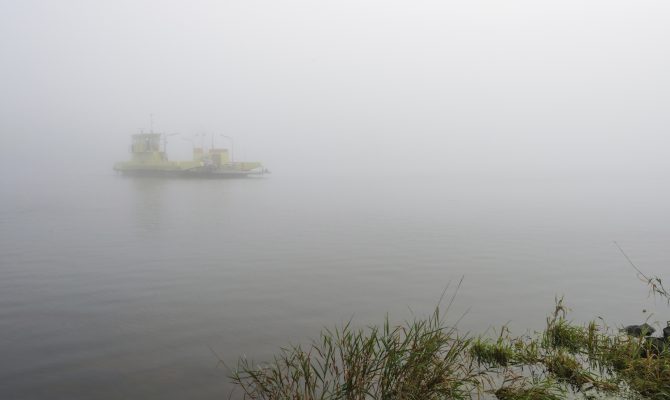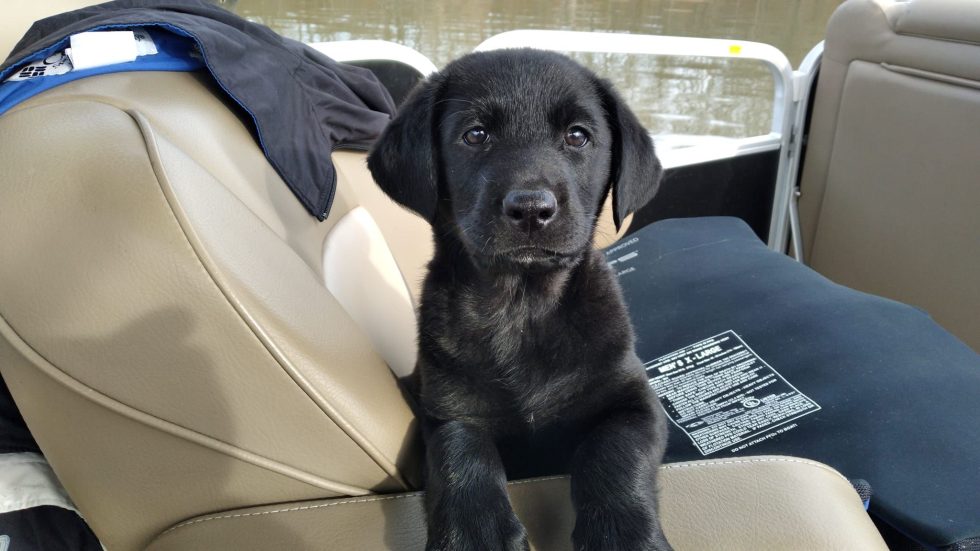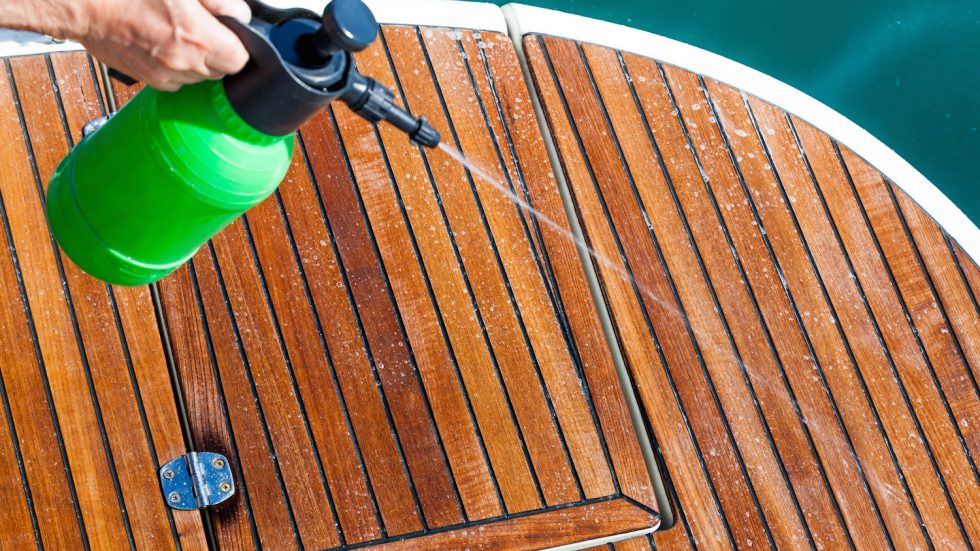So, considering my 100-yard horizon, I kept the ancient dragger we were hauling across at three knots. My one concern was a weak target that flickered in and out of the radar’s quarter-mile range; it would speed up, slow down then change direction.
I idled back and wandered forward to give a good listen. That’s another thing about fog; it distorts sound. I’ve heard the whoosh of a vessel’s hull slicing through the water or the voices of crew chatting before I’ve heard their boats’ engines or horn. Even without threatening targets, I like to shut down periodically, get as far as possible from our own noise and give a good listen.
This time, it paid off. Tearing out of the mist came a Coast Guard pilothouse RIB on full plane. It was close enough that I could see the buzz-cuts of the crew reflected in an electronic glow — both of them had their noses in the instrumentation. Considering their speed and closeness of approach (less than 20 yards) I’m sure they had no idea we were there.
I hope their mission was an important one.
Blind Trust
Arguably, I’d guess that radar has caused just as many collisions as its use has avoided. That’s because some boaters put blind trust in it. Consequently, they get overconfident and run at high speeds. I’ve been using various types and models of radar for 30 years and have been more amazed at what it doesn’t “see” than what it does.
Obviously, radar must be utilized in limited visibility, but always as an aid. It should never be your first line of defense. A well-tuned set will be a lot more efficient than one that hasn’t been tuned correctly. So, it’s important to tune your unit as specified. If you have an auto-tuned set, remember that it will target well in good conditions, but when the seas are up, it may lose poorly reflected targets. In periods of rain or snow, radars are most effective in the lower ranges.
Stu’s Rules
Following are a few more of Stu’s Rules that can make running in fog or limited visibility more palatable:
Run a darkened ship; no white lights, except at the stern, which you shouldn’t see anyway. Most instrument lights are red, which won’t affect your night vision. If a boat’s interior lights don’t have red filters, keep them off and use a red-lens flashlight below.
Don’t wield your spotlight as if it were a Star Wars lightsaber. The flashback from your superstructure will ruin your night vision as well as the vision of anybody it strikes. The same goes for your cockpit floods, which will destroy the night vision of everyone behind you. The only time I use the gazillion-candlepower spotlight on my boat is for a quick flash at a particular buoy. To make sure I don’t get blinded from the reflection of the light against my boat’s white topsides, I attached a cardboard shirt backing to the underside of the light’s lens with duct tape. It acts as a shade.
Running in thick haze or fog requires a different set of skills. There’s no question of making time here; anybody who attempts to get somewhere fast when the murk rolls in is a fool. The Rules of the Road recommend you to run at “moderate speed,” which court rulings have interpreted that term as “bare steerageway.” (Note Stu’s First Rule of Gray-World Boating, mentioned above.)
When running in shallow water during periods of reduced visibility, be aware of areas of phosphorescence surrounded by relatively calm water. The phosphorescence can be caused by the disturbance of water over a shoal. Other indicators of shoaling are areas that appear “frothier” in comparison to surrounding waters and a sudden, closely spaced chop when wind and sea conditions have not changed.
Most of this stuff is common sense. With basic seamanship and the right attitude you can cruise in the dark and murk with the same level of confidence as you would in on ideal boating day. Just be on the look out for high-speed radar watchers.
Author: Stu Reininger is a regular contributor to HeartLand Boating




